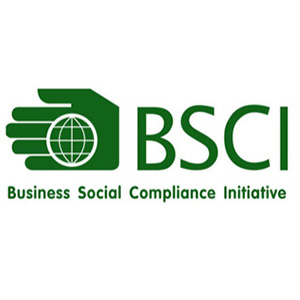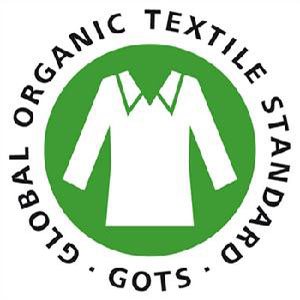Definition of common terms in BCI
1. Good cotton definition: Cotton produced by BCI cotton farmers that are produced and licensed according to a good cotton standard system or a recognized equivalent standard.
Note 1: At the level of cotton fields and ginning mills, good cotton must be stacked and processed separately from ordinary cotton (the ginning factory produces 100% good cotton lint bales).
Note 2: For more detailed information on recognized equivalent standards, please visit the BCI website.
Note 3: ‘Good cotton’ refers to the production method (ie, the producer must meet all relevant core indicators in the Good Cotton Principles and Standards); it does not refer to the specifications or quality parameters of the cotton itself.
Good cotton
Good cotton product definition: (supply chain after the ginning plant) At the time of purchase or sale, the buyer and the seller have obtained or distributed a good cotton declaration unit (BCCUs quota) through the Good Cotton Platform (BCP) or the Sales Volume Declaration (ODF). All cotton or cotton products.
Note 1: For example, if a BCI spinning mill member inputs the detailed information of the sales yarn to the BCP platform when the yarn is sold, and the corresponding BCCUs quota is allocated to the buyer, then the batch of yarn is regarded as good. Cotton products.
Note 2: In the supply chain of the inbound and outbound balanced supply chain model used after the ginning plant, the 'good cotton product' may also be a product that does not contain any physical good cotton from licensed BCI farmers.
Annual Authorized Production (AAV) Code Definition: The AAV code is a unique number generated by BCI for a licensed good cotton producer (large farm or producer unit), corresponding to the authorized total yield of a good cotton seed cotton for a good cotton producer during the harvest season. . The AAV code allows the ginner to enter information such as the quantity purchased on the Good Cotton Platform (BCP) after purchasing a good cotton seed cotton from a licensed BCI cotton farmer, and the quantity will be allocated back to the corresponding producer when the purchase transaction is cancelled.
Good Cotton Platform (BCP) Definition: An online platform for BCI to record the transfer and transfer of BCCUs related to the purchase and sale of good cotton orders.
BCP is an online platform for registered trademarks that is used only by BCI and supply chain companies with BCP accounts when purchasing or selling cotton products as good cotton orders. The platform allows suppliers and manufacturers to report to customers how much weight of lint actually consumed as a cotton product sold as a good cotton order, and how much weight of good cotton lint is purchased.
Site definition: A geographical location (within a clear boundary) produced by a supplier or manufacturer.
General trader definition: A company that simply engages in the sale of textiles (excluding lint) and does not further process or convert materials.
Garment Purchasing Intermediary Definition: A company that purchases finished products from finished product manufacturers and sells them to retail brands.
Supplier/Manufacturer is a company that buys or sells or manufactures semi-finished or finished products other than ginning mills, cotton merchants, retailers or brands.
Good cotton declaration unit definition: a designated unit, 1 BCCU corresponds to 1 kg of good cotton lint. When a BCI cotton merchant or spinning mill member purchases 1 kg of good cotton lint from a BCI cooperating ginning factory that processes cotton seed cotton, it will get 1BCCU.
After the ginning process, any product purchased or sold as a good cotton order must be transferred to the appropriate number of BCCUs (from supplier to customer) via the Good Cotton Platform (BCP). The allocation of BCCUs allows supply chain companies to count the number of BCCUs they purchase as good cotton raw materials because they order good cotton products.
Note 1: BCCUs cannot be purchased or sold separately. BCCUs can only be transferred in BCP if there is an actual cotton product order business between the buyer and the seller and purchased or sold as a good cotton order. Note 2: Once supply chain companies (any type of supplier and manufacturer other than ginning plants) receive BCCUs, BCCUs will not expire. BCCUs have no source or time distinction and do not say that these BCCUs belong to a particular cotton harvest season or natural year.
Good Cotton Supply Chain Regulatory Definition: Relevant to the circulation of good cotton products in the supply chain, time-recorded documents, written records and electronic evidence to ensure that BCI retail brand members declare no more BCCUs than licensed BCI farmers during certain periods The amount of good cotton produced (taking into account the relevant production rate).
Ordinary cotton definition: refers to all cotton that is not produced by licensed BCI farmers in accordance with good cotton principles and standards.
Note 1: The Good Cotton Supply Chain Regulatory Principles require good cotton to be stacked separately from ordinary cotton during transport in cotton fields, from cotton fields to ginning mills, and during storage and processing at ginning mills.
Note 2: According to the definition of Good Cotton Supply Chain Regulatory Principles, ‘Ordinary Cotton’ also includes organic cotton or other cotton certified for sustainability standards.
Cotton trader definition: An organization that legally and/or actually possesses lint but does not undergo any conversion (such as processing and production). In the process of transportation between different companies (such as suppliers, cotton merchants, processing plants), lint may also cross national borders.
Ginning plant definition: A company that buys seed cotton, embosses it, and sells lint bales. The finished product of the Zhahua factory is as shown below:
Zhahua factory work pictures
Inbound and Outbound Balanced Supply Chain Regulatory Model Definition: A supply chain supervision model based on total quantity balance, allowing certified and uncertified products to be mixed into the warehouse, as long as the total amount is controlled and the certified total outbound capacity does not exceed the inbound Total amount (considering the production rate) 5 . The good cotton supply chain adopts the inbound and outbound balance model for the good cotton order business of the supply chain enterprises after the ginning factory. This allows suppliers and manufacturers to mix the same amount of regular cotton and good cotton, as long as the quantity is controlled and the total amount of cotton in the product sold on a good cotton quota is less than or equal to the purchase amount (considering the production rate). In addition, all purchases and sales of good cotton products must be recorded on a good cotton platform (assigning the corresponding number of BCCUs).
Note 1: According to the Good Cotton CoC Principles, cotton traders can only mix ordinary and good cotton from the same country of origin.
Intermediary definition: An individual or business that buys seed cotton from cotton farmers and sells them to the ginning plant.
Note: Intermediaries can be independent, or they can be working representatives of cotton farmers, producer units or ginning mills.
Definition of the scope of supervision and implementation of the supply chain balance supply chain: refers to the range in which good cotton can be replaced by ordinary cotton. Replacement with the same country (country-wide): ordinary cotton and good cotton from the same country of origin can be replaced. Replacement of the same place (within the scope of the site): As long as it is processed by the same processing plant of the supplier/manufacturer, it can be replaced from any origin.
Physical Separation Supply Chain Regulatory Model Definition: This supply chain supervision model requires physical separation and processing of certified and uncertified warehousing products, and does not allow for the mixing or replacement of certified and uncertified warehousing products. Under the principle of good cotton supply chain regulation, it is required to follow the physical separation supervision mode from cotton farmers to ginning factories—that is, good cotton from licensed BCI farmers must be separated from ordinary cotton for harvesting, storage, transportation and ginning, and It cannot be mixed or replaced with ordinary cotton in any process.









